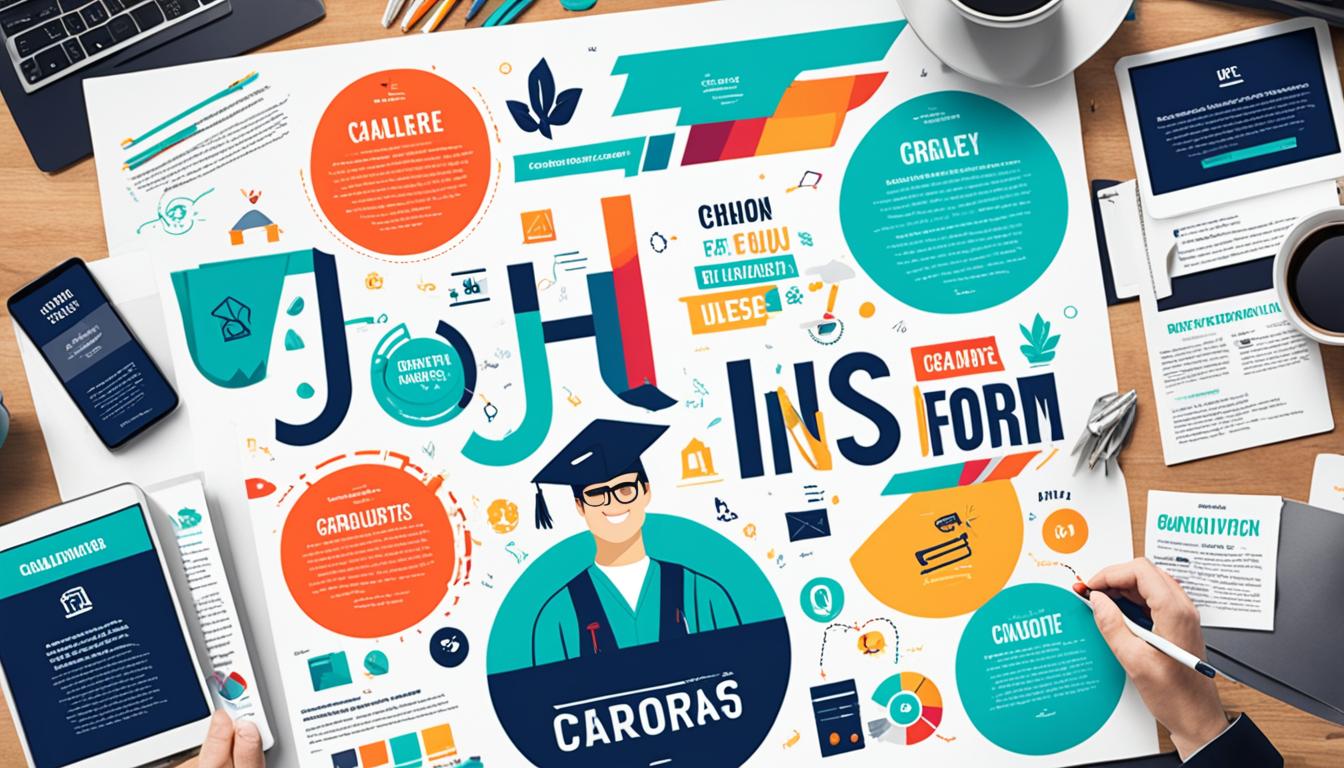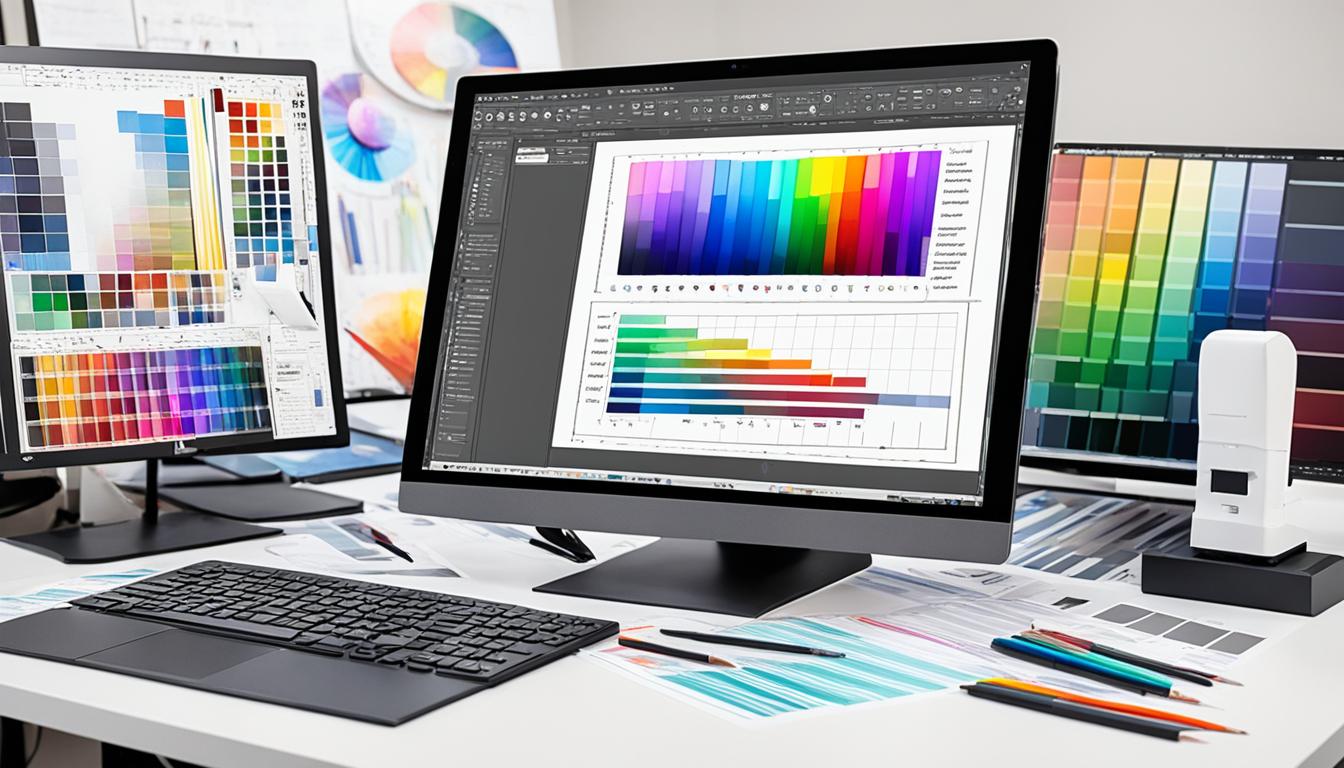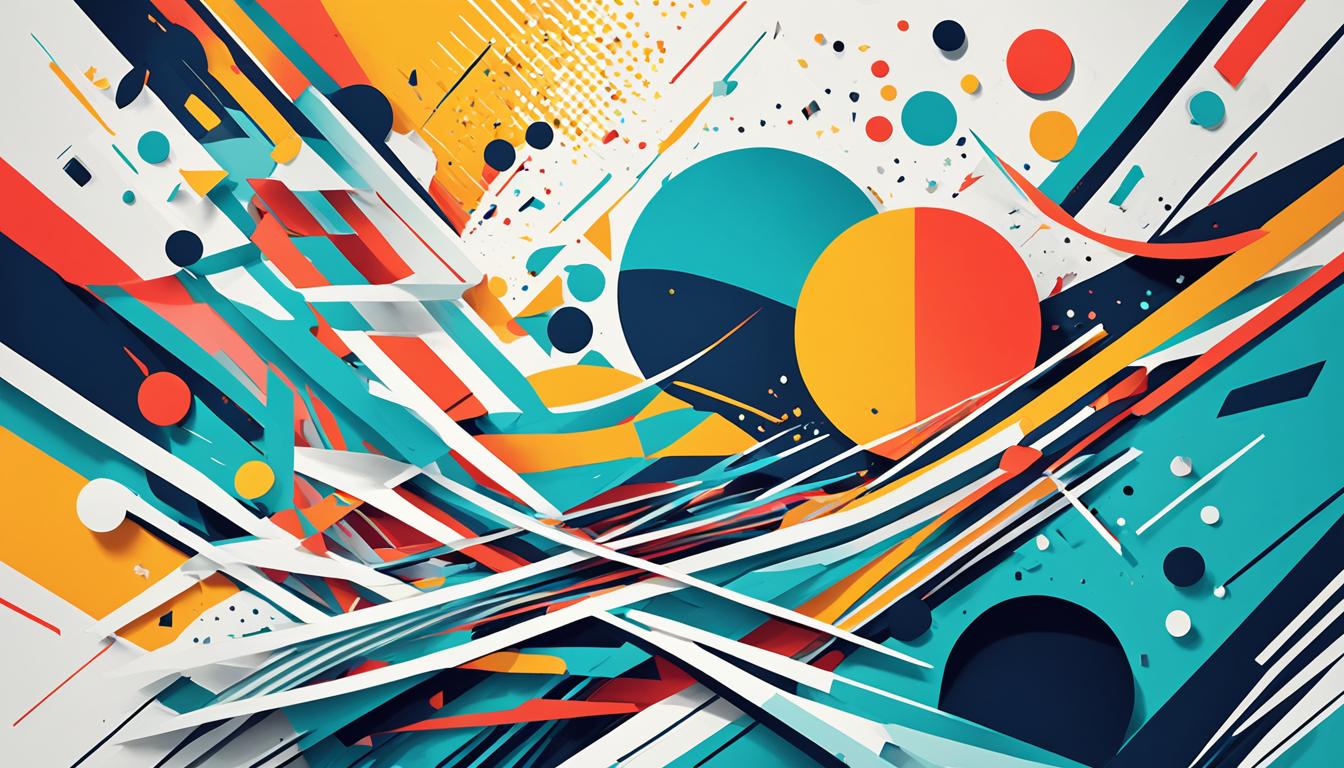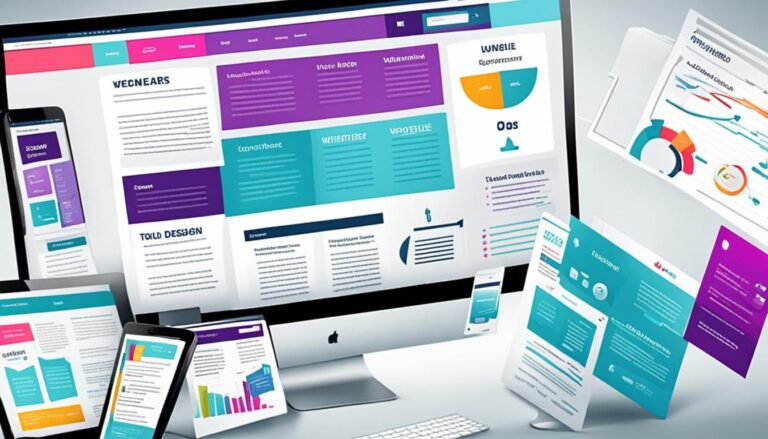Graphic Design Major Careers: Scope & Opportunities
A graphic design major offers a world of possibilities for aspiring designers. With a degree in graphic design, you can explore a variety of creative and design-related careers. From advertising art directors to web designers, there are numerous job options directly linked to a graphic design degree. Additionally, a graphic design major also opens doors to roles where your skills would be valuable, such as creative director, digital marketer, and fine artist.
Employers in the graphic design field span across various industries, including advertising firms, branding specialists, media companies, and PR agencies. This means that the scope of job prospects is wide and diverse, ensuring that your career opportunities are not limited to a specific field.
Building a strong portfolio and gaining practical experience through internships and competitions can greatly enhance your chances of success in the graphic design industry. By showcasing your skills and networking, you can create connections that may lead to exciting job opportunities. With dedication, creativity, and a passion for design, a graphic design major can pave the way for a fulfilling career.
Skills and Qualifications for Graphic Design Careers
A graphic design degree equips students with a diverse range of subject-specific and technical skills that are highly valued in the industry. These skills can be honed through a comprehensive graphic design program, providing graduates with the expertise needed to succeed in their careers.
Subject-Specific Skills: Graphic designers develop a wide range of subject-specific skills that enable them to create visually appealing and impactful designs. Some of the key subject-specific skills acquired through a graphic design program include:
- Branding: Crafting unique visual identities and brand strategies.
- Editorial Design: Designing layouts for books, magazines, and other publications.
- Information Design: Presenting complex information in a clear and visually engaging manner.
- Moving Image: Creating animated visuals and videos.
- Digital Media: Designing for digital platforms and user experiences.
- Printmaking: Creating art prints and reproductions using various techniques.
- Typography: Skillfully arranging and manipulating typefaces for effective visual communication.
Technical Skills: In addition to subject-specific skills, graphic designers also acquire a range of essential technical skills that are integral to their profession. These technical skills include:
- Coding: Proficiency in coding languages such as HTML, CSS, and JavaScript.
- Computer Software Skills: Mastery of graphic design software such as Adobe Creative Suite and web design tools.
- Drawing and Sketching: The ability to create hand-drawn illustrations and sketches.
- Interactive Design: Designing engaging and interactive user interfaces.
- Photography: Capturing and editing high-quality images for use in designs.
“Graphic designers not only possess technical expertise but also develop other skills that are highly sought after by employers. These include creativity, communication skills, teamwork, time management, analytical skills, research skills, ability to work independently, presentation skills, and entrepreneurial skills. Such skills complement the technical proficiency, allowing graphic designers to effectively conceptualize and execute design projects.”
Aside from a bachelor’s degree, graphic designers can explore further study options to specialize in specific areas or related fields. Pursuing a master’s degree offers the opportunity for specialization in topics such as multimedia, landscape architecture, or interior design. Additionally, short, further education courses are available to enhance existing technical skills or learn new ones.
By acquiring both subject-specific and technical skills, graphic designers are prepared to take on the challenges of the industry and bring their creative visions to life.
Key Skills and Qualifications for Graphic Design Careers
| Subject-Specific Skills | Technical Skills |
|---|---|
| Branding | Coding |
| Editorial Design | Computer Software Skills |
| Information Design | Drawing and Sketching |
| Moving Image | Interactive Design |
| Digital Media | Photography |
| Printmaking | |
| Typography |
Career Paths and Job Outlook in Graphic Design
Graphic design offers diverse career paths, providing a plethora of job opportunities for aspiring designers. The job outlook for graphic designers is highly promising, with steady growth projected in the coming years. In fact, the US Bureau of Labor Statistics (BLS) estimates a 3% increase in employment for graphic designers from 2021 to 2031.
When it comes to salary, graphic designers can expect a median annual income of $50,710 in the United States. This figure may vary based on factors such as experience, location, and industry.
With approximately 24,800 job openings available each year, the demand for graphic designers remains strong. This presents ample chances for individuals seeking to start or advance their careers in this field.
Popular Career Paths in Graphic Design
Graphic design encompasses a wide array of specialized roles, each with its unique set of skills and responsibilities. Here are some of the popular career paths in graphic design:
- Graphic Designer
- Creative Director
- User Experience (UX) Designer
- User Interface (UI) Designer
- Production Artist
- Product Developer
- Art Director
- Marketing Specialist
- Brand Designer
To excel in these career paths, graphic designers often utilize software programs like Adobe Photoshop, Adobe Illustrator, and Canva. These tools enable them to create visually stunning designs and bring their ideas to life.
Qualifications for a Career in Graphic Design
While qualifications may vary based on the specific role and employer, certain prerequisites are essential in the graphic design industry. These include:
- A strong portfolio showcasing previous design work
- Relevant experience, such as internships or freelance projects
- A proficiency in design principles and software applications
By developing these qualifications, aspiring graphic designers can enhance their employability and stand out in a competitive job market.
Overall, graphic design offers an exciting and rewarding career path, filled with countless opportunities for growth and creativity. With the right skills, qualifications, and dedication, individuals can forge a successful and prosperous future in this ever-evolving field.
Conclusion
A graphic design major offers a wide range of career opportunities in various industries. Graduates can pursue roles as graphic designers, creative directors, UX designers, UI designers, production artists, and more. With a positive job outlook and steady growth, there are abundant job prospects for graphic design majors.
Graphic designers can utilize their skills in branding, coding, computer software, digital media, editorial design, and more. Building a strong portfolio, gaining relevant experience through internships and work placements, and continuously developing skills are crucial for success in the field.
Staying updated with industry trends and technology is essential for graphic designers to meet the demands of the ever-evolving design landscape. By possessing the right qualifications and a passion for creativity and design, a career in graphic design can be both rewarding and fulfilling.
FAQ
What are the job options directly related to a graphic design degree?
Some job options directly related to a graphic design degree include advertising art director, animator, exhibition designer, graphic designer, illustrator, UX designer, and web designer.
What are some jobs where a graphic design degree would be useful?
Some jobs where a graphic design degree would be useful include creative director, digital marketer, fine artist, game artist, interior and spatial designer, medical illustrator, multimedia programmer, multimedia specialist, printmaker, production designer, and urban designer.
What can be acquired through a graphic design program?
Skills that can be acquired through a graphic design program include branding, coding, computer software skills (such as Adobe graphic design software and web design), digital media, editorial design, drawing and sketching, information design, interactive design, moving image, photography, printmaking, and typography.
What other skills do graphic designers develop?
Graphic designers also develop other important skills sought after by employers, such as creativity, communication skills, teamwork, time management, analytical skills, research skills, ability to work independently, presentation skills, and entrepreneurial skills.
What are some further study options for graphic design majors?
Further study options for graphic design majors include pursuing a master’s degree to specialize in a specific topic or to enter a related field like multimedia, landscape architecture, or interior design. Short, further education courses are also available to learn new technical skills or enhance existing ones.
What are some typical employers in the graphic design field?
Typical employers in the graphic design field include advertising firms, branding specialists, design consultancies and studios, media and communication companies, packaging companies, PR agencies, and publishing companies.
What is the job outlook for graphic designers?
The job outlook for graphic designers is positive. According to the US Bureau of Labor Statistics (BLS), the median salary for graphic designers in the US is $50,710, and the job outlook is projected to grow at a rate of 3% from 2021 to 2031. There are approximately 24,800 job openings for graphic designers each year.
What are some popular career paths in graphic design?
Some popular career paths in graphic design include graphic design, creative director, user experience (UX) designer, user interface (UI) designer, production artist, product developer, art director, marketing specialist, and brand designer.
What software programs do graphic designers often use?
Graphic designers often use software programs like Adobe Photoshop, Adobe Illustrator, and Canva.
What qualifications are important for a career in graphic design?
Qualifications for a career in graphic design may vary, but having a strong portfolio, relevant experience, and a good command of design principles and software are important.










